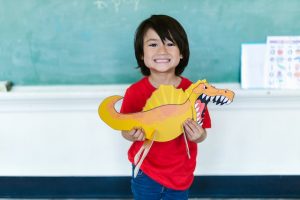
Dinosaur play sparks a child’s natural curiosity about the world, history, and animals. It also is a great creative outlet, where they can imagine and set up whole new, awe-inspiring environments.
The following is a list of play extension ideas that might also help you find ways to expand on the children’s knowledge and experience! You will also find materials, as well as room setup and other considerations, at the bottom of the page.
Science
- Learn about dinosaurs. When and where did they live? What did they eat?
- Learn about fossils, and show the children fossils of different kinds.
- Examine dinosaur toys and/or fossils under a microscope. Talk about things like size, shape, and texture
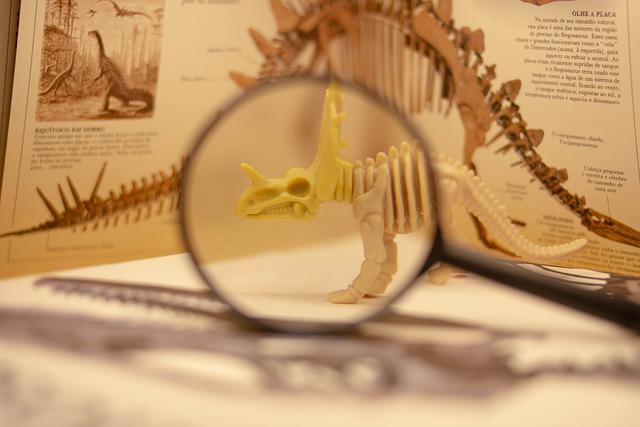
- Freeze small dinosaurs in ice cube trays, containers, plastic bags or egg shapes. Just put the dinosaur toy in the container, and fill it with water! Then put it in the freezer overnight. Once frozen you can crack the shells to see frozen animals in the ice just like in the ice age. Children can have fun watching and examining the dinosaurs while the ice melts. They can also use something to crack the ice and see if they can get the dinosaur out more quickly.
- Fill an aquarium or clear container with rocks, sand, and/or water, and a variety of dinosaurs. Ask the children what other kinds of materials they think the dinosaurs would like
- Place different types of bones, sticks and/or pasta shapes to create dinosaur skeletons. If you display pictures of examples, it can help generate ideas!
- Use clay, sand, mud, and playdough to make dinosaurs, bones or eggs. The play can even be extended and incorporate creativity – especially if you dry and paint the children’s sculptures!
- Explore excavation of dinosaurs bone placed in container bones and mud to discover
- Read books about dinosaurs
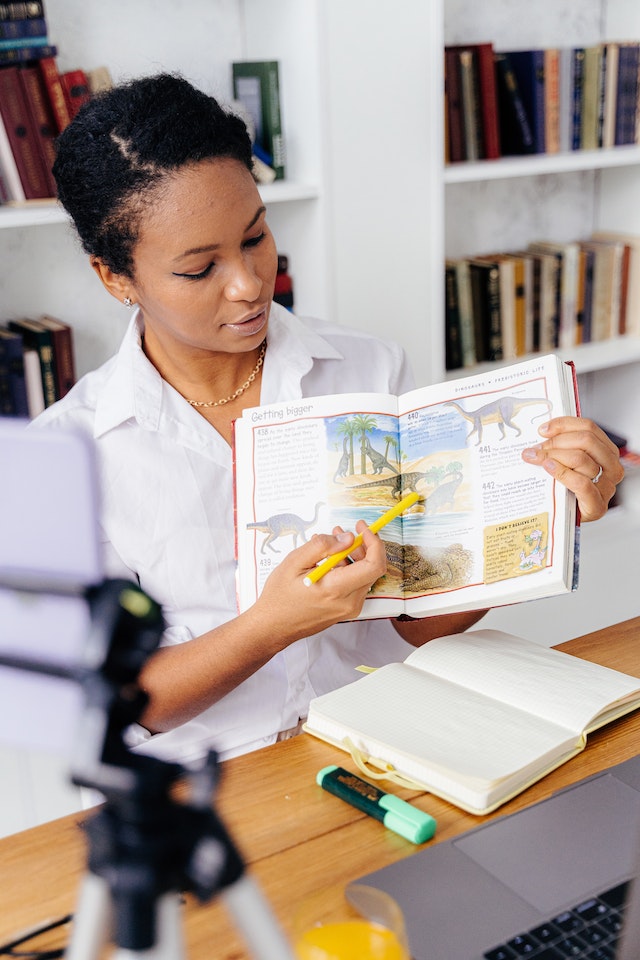
- Why are there no dinosaurs now – discuss the reasons
Cognitive
- Create your own “I’m Bringing Home a Baby Dinosaur”
- Learn about and categorize dinosaurs. For example, which ones are vegetarian/herbivores? Which ones eat meat/are carnivores? Which ones have spikes? Which ones fly? Which ones walk on two/four legs? Display a variety of books and build stories about the pictures
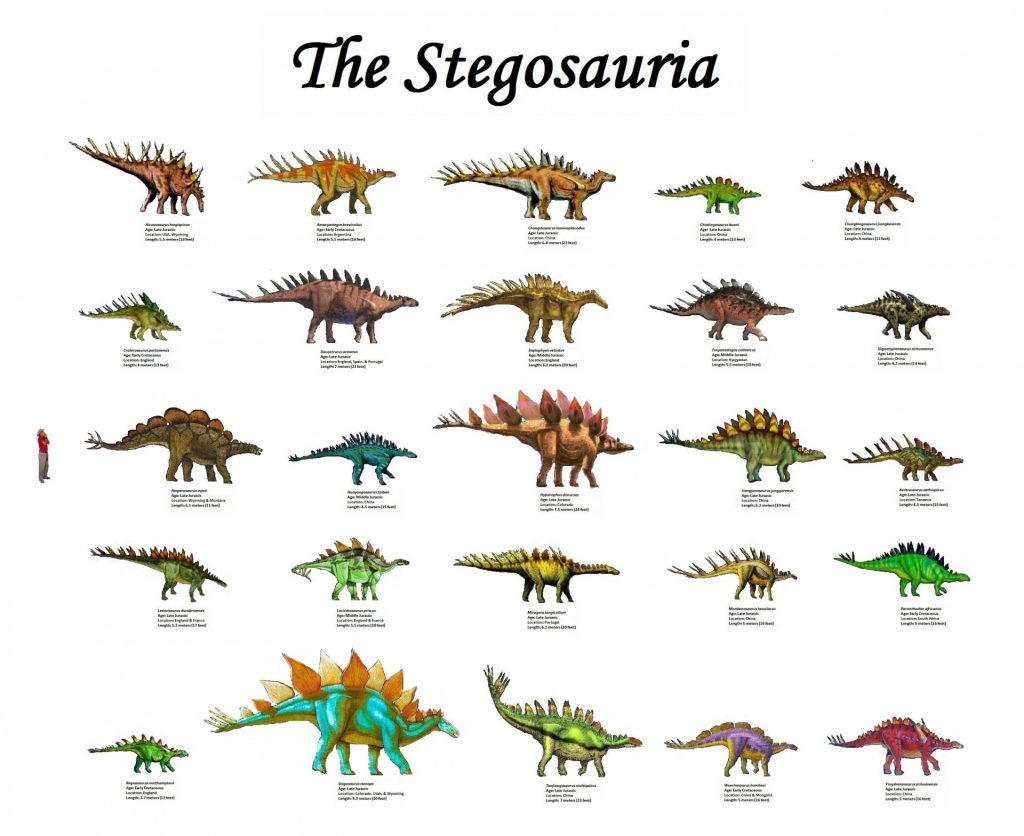
- Read books together about dinosaurs and extinction. Display pictures on the wall. Talk about what you learn together.
- Place measuring tapes, scales, and plants and dinosaurs. Sort them by weight, size and shape.
- Trace dinosaur’s feet. Talk about and compare size and shape.
- Classify the animals by colors, shapes, size
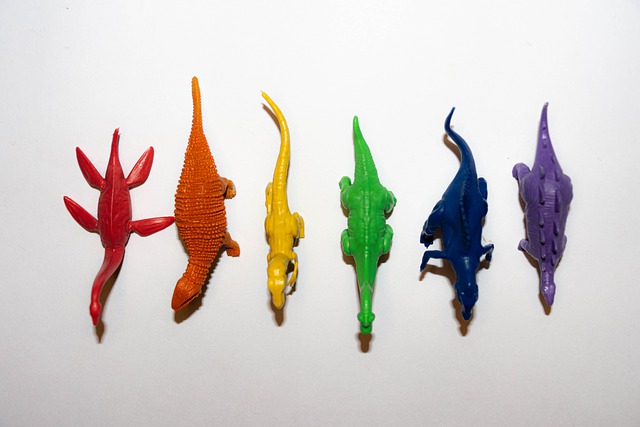
- Match the different kinds of dinosaurs with their names
- Create and play dinosaur puzzles and matching games. For example, the children can match the dinosaurs to their name.
- Provide the children with picture cards with different dinosaurs. It is an opportunity to match, categorize and discuss..
- Make cards with the pictures and the names of dinosaurs. Encourage the children to look at the letters and see if any of the same letters are in their names. You might even make pictures and name cards for the children to compare letters!
- Use building materials and loose parts for the children to create a dinosaur world. They can use the plastic dinosaurs in their creation or they can make their own representation of dinosaurs.
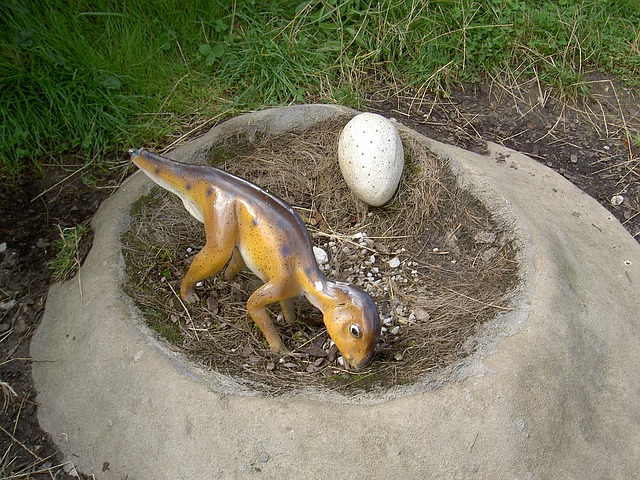
Culture and diversity
- Discuss what dinosaur skin looks like (texture and colour) and compare the dinosaurs to the children to see if anything matches. Talk about similarities and differences. What is the same or different about humans and dinosaurs? For example, dinosaurs and people are similar in that they come in all shapes and sizes, and they have different skills and challenges. But do dinosaurs have hair? And are there any people the size of a house.
- What areas of the world did dinosaurs live – was one of them where your family comes from.
Families/Communities
Families
- Classify dinosaurs into different “families”
- Just like us, some dinosaurs eat meat, and others eat plants. What does your family like to eat?
- Dress up in costumes and do a dinosaur parade for families and students.
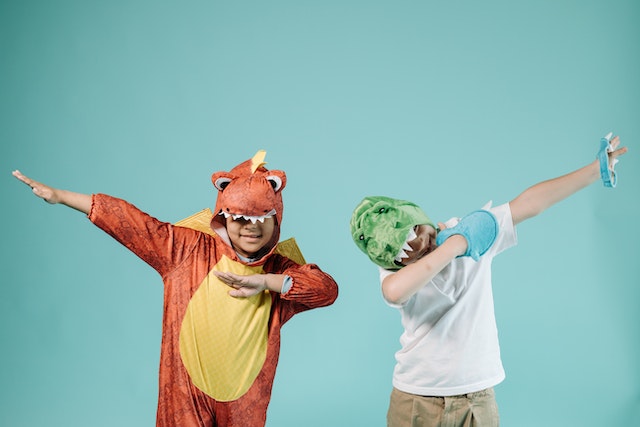
Communities
- Visit a museum
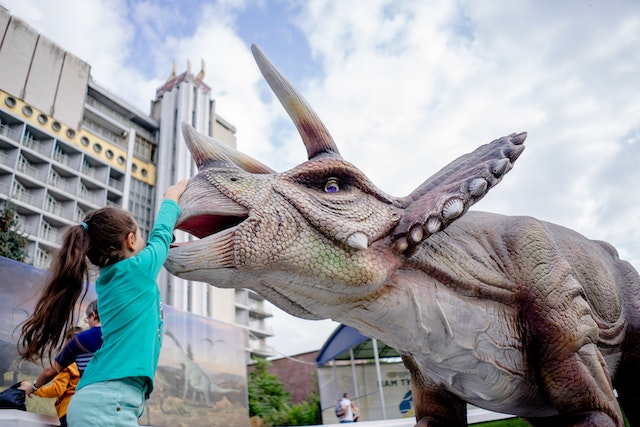
- Visit the library and find books about dinosaurs
- Talk about areas of Canada where dinosaurs used to live for example Drumheller Alberta Dinosaurs | Travel Drumheller.
Dramatic Play
- Tape “dinosaur footprints” on the floor (you can even add numbers to encourage numeracy). Encourage the children to follow the numbers to see where the path leads – and they might even find a dinosaur! Or maybe the children pretend to be dinosaurs as they stomp down the path… and you can work with the children to set up an area with “dinosaur food and games” for the dinosaurs to enjoy at the end of the path.
- Set up the space like a museum with different types of bones, fossils, and dinosaurs. You can even add pictures and dinosaurs flying/hanging from the ceiling.
- Create a space that looks like where dinosaurs once lived. It might be the ocean, the ice age, or on land. Add things like leaves, trees, rocks, branches, sand, water and/or ice.
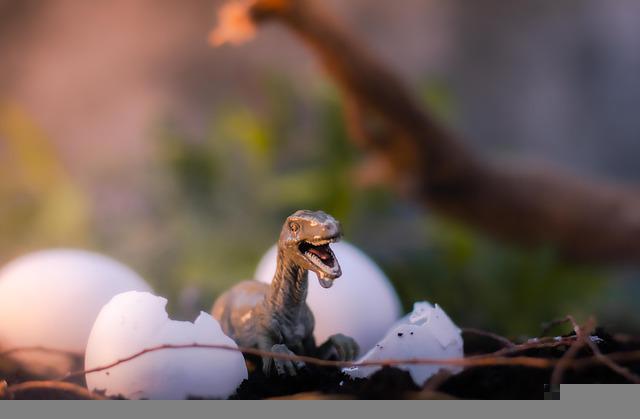
- Have the children act out different types of dinosaurs – they may even want to make dinosaur costumes out of fabric or cardboard boxes!
- Imagine what kinds of sounds dinosaurs might have made. Children can even make up their own imaginary dinosaur and sound, and act it out!
Gross motor and movement
- Play the game “What Time is it Mr. Dinosaur? (instead of What Time is it Mr. Wolf?). Trace dinosaurs’ feet and place on the floor for them to follow. If you add numbers to the footprints, the children can also practice count and become more familiar with numbers.
- Play Raptors basketball.
- Have a dinosaur dance party! Play I Spy Dinosaurs (take turns moving like dinosaurs and guessing which dinosaur they are)
- Stomp like dinosaurs – take large/small, fast/slow steps. Draw a line out the ground to compare the length of the children to the length and width of a dinosaur
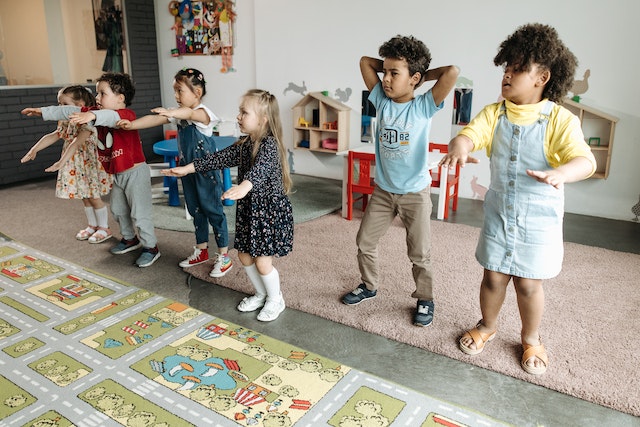
Fine motor
- Create/play with dinosaur puzzles (depending on the age of the children – it can even be as small as 4 or 5 pieces)
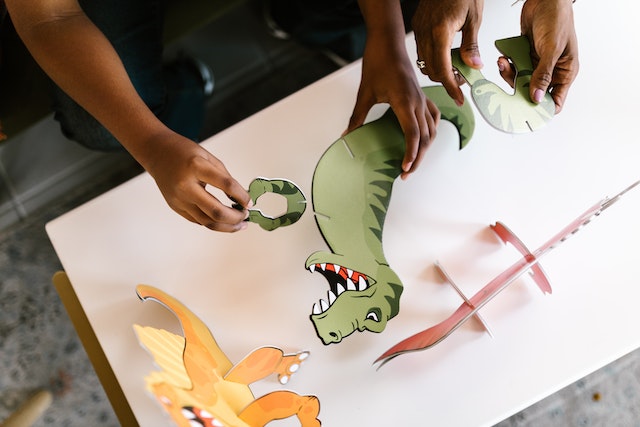
- Build a Mammoth ramp walker
- Sort dinosaurs by color, shape and sizes. You can provide tongs and tweezers.
- Paint with dinosaurs
- Use scissors to cut grass and other food for the dinosaurs
- Use small tools and a paintbrush to carefully “excavate” the dinosaurs from the sand
Social/Emotional
- Talk about how dinosaurs lived. Who took care of the babies? Did they live in families? Did different types of dinosaurs play together.
- How do dinosaurs make you feel – happy, scared etc.
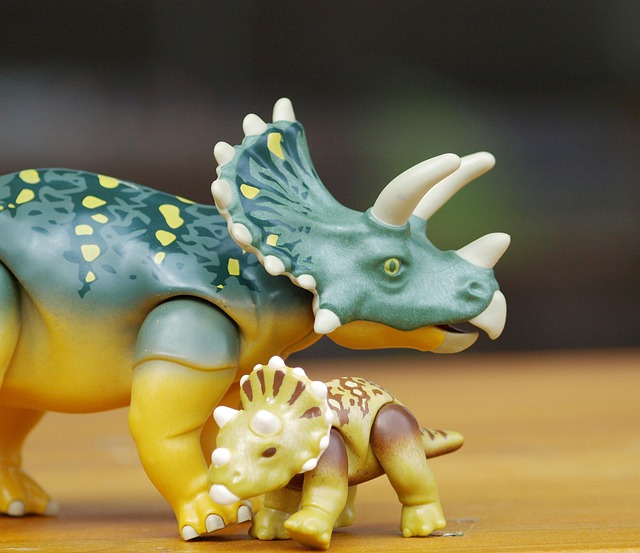
Sensory
- Get dinosaur shapes or molds, and use clear or white jello to form the shape. Chill, then poke holes and add food colouring using an eyedropper. Then squeeze and see the colors expand in the dinosaurs
- Place rice in a sensory bin and add a variety of dinosaurs inside small containers for the children to find.
- Create dinosaurs from playdough or clay
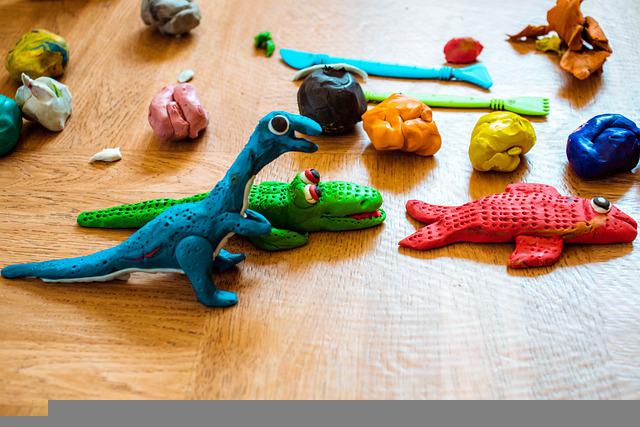
- Add dinosaurs to water or sand play. Add toothbrushes and small paint brushes to clean the dinosaurs
- Create dinosaur footprints in playdough or clay.
- Place dinosaurs in slime or goop
- Make cookies using a dinosaurs cookie cutter
- Paint and wash plastic dinosaur figures.
- Add small rocks to the sensory table with dinosaurs
- Add snow to the sensory bin and place dinosaurs. You can also add coffee grinds to add another layer of interest and exploration.
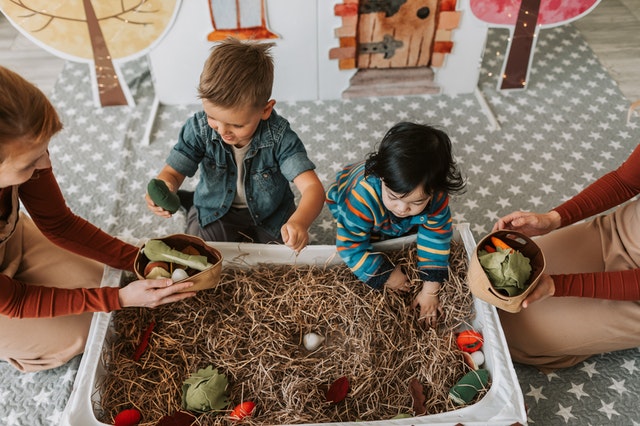
Art and creative
- Trace dinosaur shadows
- Use paint to make dinosaur footprints.
- Shred paper and spray with green food colouring to make grass
- Get large cardboard boxes and create a home for dinosaurs. Children can paint the boxes, glue dinosaur pictures, add rocks, sand, leaves and sticks.
- Glue dinosaurs and stickers, or colour and draw pictures of dinosaurs onto tissue boxes to make dinosaurs’ feet.
- Build a volcano with paper mache together. Let it dry before painting. Once the paint has dried, you can add baking soda and vinegar to “blow up” the volcano. You can even add little dinosaurs and trees around the volcano. (this project will take a few days)
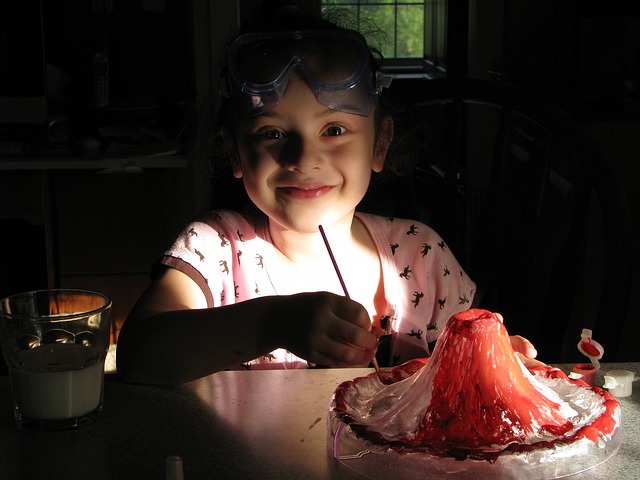
- Give the children open-ended creative materials and ask them to create their own dinosaur. What does it look like for them? What would it eat? What would it sound like?
- Talk about what kinds of environments the dinosaurs lived in and encourage the children to create a space for their favourite dinosaur. It might be a forest, ocean, ice or mountains. You might even have a child who wants to make up their own dinosaur that lives in outer space!
- Make dinosaur lanterns with glass jars, and place dinosaurs in paper shapes. Then put a tea light in jars or a battery light
Language
- Names of the different dinosaurs
- Colours, shapes and sizes
- Fossil
- Bones
- Footprint
- Measure dinosaur feet and do comparisons, discuss the size of the bones
- Post the names of each dinosaur to show the number of letters in each name
- Create a dinosaur village and label the areas
Loose Parts
- Rocks, sand, sticks, pine cones
- bones, fossils, plants
- Dry leaves
- Dry rice, pasta
- egg shapes
- Baskets and boxes, Small pieces of fabric, scarves
- Roll of masking tape
- Paper rolls, bathroom tissue
- Streamers, string, bungee cords
- Small blankets, clothes pegs, large buttons
- Bottle caps
- Gems from the dollar store
- Brushes, toothbrushes, scoops
Materials
Different material ideas:
- Scarves, ribbons and string
- Glue and pasta
- Masking/duct tape
- Boxes and containers
- Trees and grass
- Logs and sticks
- Sand and shovels
- Puzzles
- Plastic bottles
- Dinosaurs eggs
- Modeling clay or play dough
- Sidewalk chalk
- Mud/sand/rocks
Room setup and considerations
- Dinosaurs need lots of space to display and play
- Combine interest areas (block and dramatic) that allow children to have space to play
- Remember to use the ceiling as a source for displaying items.

